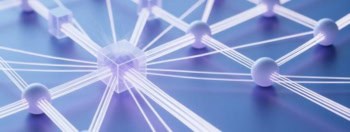
The positions of individual protons on a surface can be pinned down to within 0.1 nm, thanks to a new quantum technique based on nuclear magnetic resonance (NMR) developed by researchers in the US. The method, which works at room temperature, uses an effect that is usually considered a nuisance because it degrades the performance of diamond-based quantum bits (qubits). The researchers say that the technique could be used to study individual proteins or even spins in a superconductor.
At the heart of the new method are crystal defects that occur in diamond when two adjacent carbon atoms are replaced by a nitrogen atom and a vacant site. These “nitrogen-vacancy” (NV) centres have an electronic spin that is very well isolated from its surroundings, which means that they could play a key role in future quantum computers. And because an NV centre can emit just a single photon if excited by a laser, quantum information could be stored for long times in this kind of defect before being read out as a photon.
Bling NMR
While NV centres that lie deep within a diamond are well-isolated, those within a few nanometres of the surface interact strongly with electron spins on the surface. Such centres would not, therefore, be used to make a quantum computer, but physicists have used them to study the properties of electrons on the surface of diamond. Two independent groups have also used NV centres to do NMR studies of molecules on the surface of diamond (see “Diamond downsizes classical MRI and NMR”).
Now, Alex Sushkov and colleagues at Harvard University have developed a new NMR technique that uses the surface electrons as “quantum reporters” to measure the positions of individual protons on the surface of diamond.
In the future we hope that it will be useful for gathering structural information for biomolecules, such as proteins
Alex Sushkov, Harvard University
The first step involves mapping the locations of surface spins that are within a few nanometres of a NV centre, by applying a magnetic field to the diamond and then firing a sequence of radio-frequency pulses (RF) at the sample. Known as double electron–electron resonance (DEER), this is an established technique used to measure the distance between electrons in a molecule. Information is extracted from the system by measuring the final spin state of the NV centre by observing the fluorescent light it emits. By repeating the measurement with the magnetic field in different directions, the team can map the locations of the surface spins nearest to the NV centre (see figure above).
Spin echoes
In an experiment reported in Physical Review Letters, the team was able to locate four surface spins that were within several nanometres of an NV centre, which itself was about 3 nm below the diamond’s surface. The team then focused its efforts on the spin nearest to the NV centre. Using an applied magnetic field and a different sequence of RF pulses, the researchers were able to make a “spin-echo” measurement of the magnetic field near that single “reporter” spin. This measurement is affected by the presence of the nuclear magnetic moments of nearby protons that happen to be stuck to the diamond surface. Two protons were seen to be near to the reporter spin and, by careful analysis of the spin-echo data, the team was able to determine the locations of the protons to within 0.1 nm. This distance is on a par with the spacing between atoms in molecules and solids.
An important practical feature of the technique is that it is sensitive to protons on the surface of diamond, which means that a range of molecules could, in principle, be studied by simply depositing them on diamond. “We are currently working on applying this technique to magnetic structural imaging of simple molecules,” says Sushkov. “In the future, we hope that it will be useful for gathering structural information for biomolecules, such as proteins, that cannot be studied with other techniques.” Sushkov also believes that it could also be possible to use quantum reporters to make time-resolved measurements, which would allow some chemical reactions to be monitored.
With further development, reporter spins could be used to make localized magnetic measurements in solid materials, such as superconductors and topological insulators.



